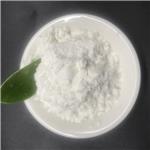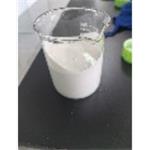- Pyraclostrobin
-

- $10.00 / 1KG
-
2025-04-23
- CAS:175013-18-0
- Min. Order: 1KG
- Purity: 99%
- Supply Ability: 5tons
- Pyraclostrobin
-

- $0.00 / 25KG
-
2025-04-15
- CAS:175013-18-0
- Min. Order: 1KG
- Purity: 99%
- Supply Ability: 500000kg
- Pyraclostrobin
-

- $0.00 / 1kg
-
2025-04-11
- CAS:175013-18-0
- Min. Order: 1kg
- Purity: 98
- Supply Ability: 200000
|
| | Pyraclostrobin Basic information |
| | Pyraclostrobin Chemical Properties |
| Melting point | 63.7-65.2° | | Boiling point | 501.1±60.0 °C(Predicted) | | density | 1.27±0.1 g/cm3(Predicted) | | storage temp. | 0-6°C | | solubility | DMSO: 250 mg/mL (644.63 mM) | | pka | -0.23±0.10(Predicted) | | form | Solid | | color | Off-white to light yellow | | Stability: | Toxic | | InChIKey | HZRSNVGNWUDEFX-UHFFFAOYSA-N | | LogP | 4.250 (est) | | NIST Chemistry Reference | Pyraclostrobine(175013-18-0) | | EPA Substance Registry System | Pyraclostrobin (175013-18-0) |
| Hazard Codes | N | | Risk Statements | 50/53 | | Safety Statements | 60-61 | | RIDADR | UN3077 9/PG 3 | | WGK Germany | 2 | | RTECS | EZ3441000 | | Hazardous Substances Data | 175013-18-0(Hazardous Substances Data) | | Toxicity | LD50 in rats (mg/kg): >5000 orally; >2000 dermally; LC50 in rainbow trout: 0.006 mg/l (Ammermann) |
| | Pyraclostrobin Usage And Synthesis |
| Uses | Agricultural fungicide. | | Uses | Pyraclostrobin is a fungicide for use in seed grass and food crops. | | Definition | ChEBI: Pyraclostrobin is a carbamate ester that is the methyl ester of [2-({[1-(4-chlorophenyl)-1H-pyrazol-3-yl]oxy}methyl)phenyl]methoxycarbamic acid. A fungicide used to control major plant pathogens including Septoria tritici, Puccinia spp. and Pyrenophora teres. It has a role as a mitochondrial cytochrome-bc1 complex inhibitor, a xenobiotic, an environmental contaminant and an antifungal agrochemical. It is a member of pyrazoles, a carbamate ester, an aromatic ether, a member of monochlorobenzenes, a methoxycarbanilate strobilurin antifungal agent and a carbanilate fungicide. | | Agricultural Uses | Pyraclostrobin (trade names: Cabrio®, Headline®) primed the tobacco cv. Xanthi nc for more rapid accumulation of antimicrobial PR-1 defence proteins after infection with Tobacco mosaic virus and the wildfire pathogen Ps pv. tabaci. The Pyraclostrobininduced priming for enhanced PR-1 accumulation in response to pathogen attack was associated with enhanced disease resistance (Herms et al. 2002). The enhanced resistance to pathogenic viruses and bacteria in Pyraclostrobin-treated plants was also seen on various crops and ornamental plants in both the greenhouse and field (Koehle et al. 2003, 2006). It is interesting that in the field, Pyraclostrobin-induced priming was associated with enhanced resistance also to abiotic stresses, including drought. In addition, treatment with Pyraclostrobin increased crop yield in the field. Also, in various crops Pyraclostrobin and other strobilurin fungicides induce a ‘greening effect.’ The term refers to the phenomenon of delayed leaf senescence and an increased grain-filling period resulting in enhanced biomass and yield (Bartlett et al. 2002). Together, the findings made with Pyraclostrobin suggest that this chemistry, in addition to exerting direct antifungal activity, may also protect plants by priming them for a boosted activation of subsequently stress-induced defence responses. This conclusion is consistent with an earlier report demonstrating that another commercial fungicide, Oryzemate®, enhanced the resistance to Tobacco mosaic virus in tobacco (Koganezawa et al. 1998) and to a bacterial and an oomycete pathogen in Arabidopsis (Yoshioka et al. 2001). Oryzemate® contains Probenazole as the active ingredient which is metabolized to saccharin in treated plants (Koganezawa et al. 1998). The latter compound seems to elicit priming in Oryzemate®-treated plants (Siegrist et al. 1998). | | in vivo | Pyraclostrobin (0.01-0.08 μmol/L, Zebrafish larvae were subjected to pyraclostrobin exposure persisting until 72 h post fertilization) results in hepatomegaly in zebrafish larvae[1].
Pyraclostrobin (0.001-0.02 mg/L, Fish were assigned to a vessel containing 20 L of water dissolved Pyraclostrobin for 7-28 days) has the toxic effects on DNA damage and antioxidant enzymatic activities in the zebrafish liver[2].
Pyraclostrobin (33-48 μg/L, Zebrafish larvae at 4 days post fertilization (dpf) were transferred into 24-well plates and subjected to pyraclostrobin until 8 dpf) has toxic effects on zebrafish larvae[3]. | Animal Model: | Zebrafish [2] | | Dosage: | 0.001 mg/L, 0.01 mg/L, 0.02 mg/L | | Administration: | Fish were assigned to a vessel containing 20 L of water dissolved Pyraclostrobin | | Result: | Showed higher ROS levels in zebrafish livers.
Decreased SOD levels and increased MDA levels.
Increased the olive tail moments as the dose increased on days 7, 14, 21, and 28. |
| Animal Model: | Zebrafish larvae [3] | | Dosage: | 33 mg/L, 36 mg/L, 40 mg/L, 44 mg/L, 48 mg/L | | Administration: | Zebrafish larvae at 4 days post fertilization (dpf) were transferred into 24-well plates and subjected to pyraclostrobin until 8 dpf | | Result: | Damaged histological and subcellular structure of larval heart and brain.
Changed the expression level of cardiac muscle contraction pathway- and neural-related genes and proteins.
Impaired larval cardiac function and locomotor behavior. |
| | IC 50 | Bax; Bcl-2 |
| | Pyraclostrobin Preparation Products And Raw materials |
|